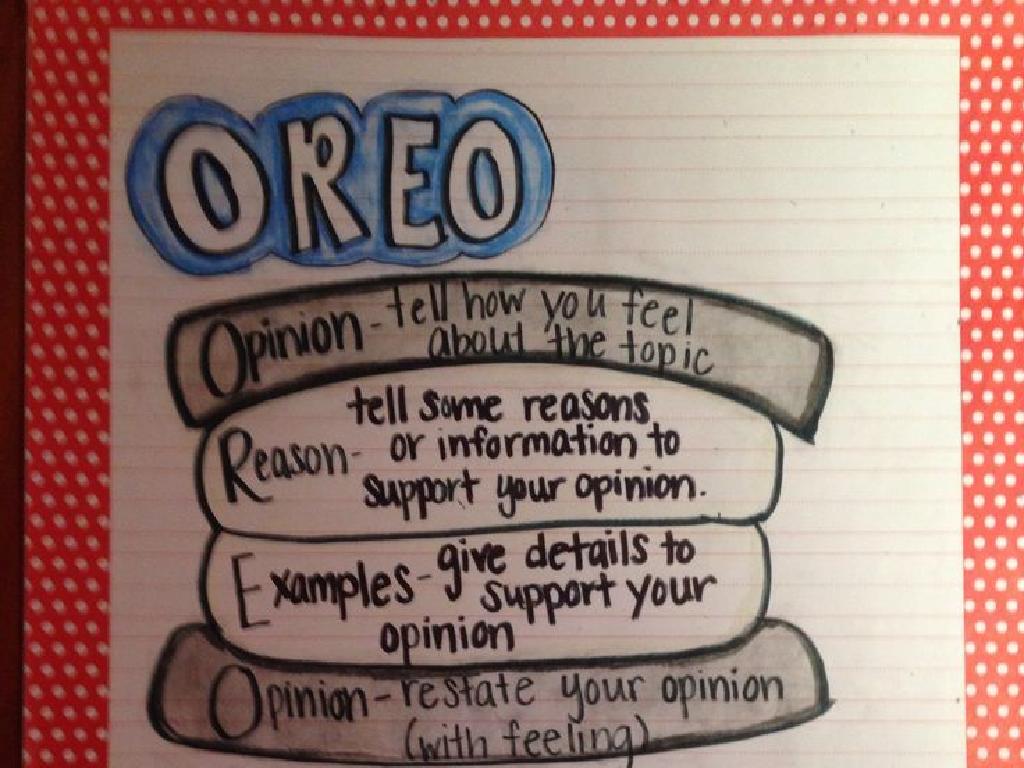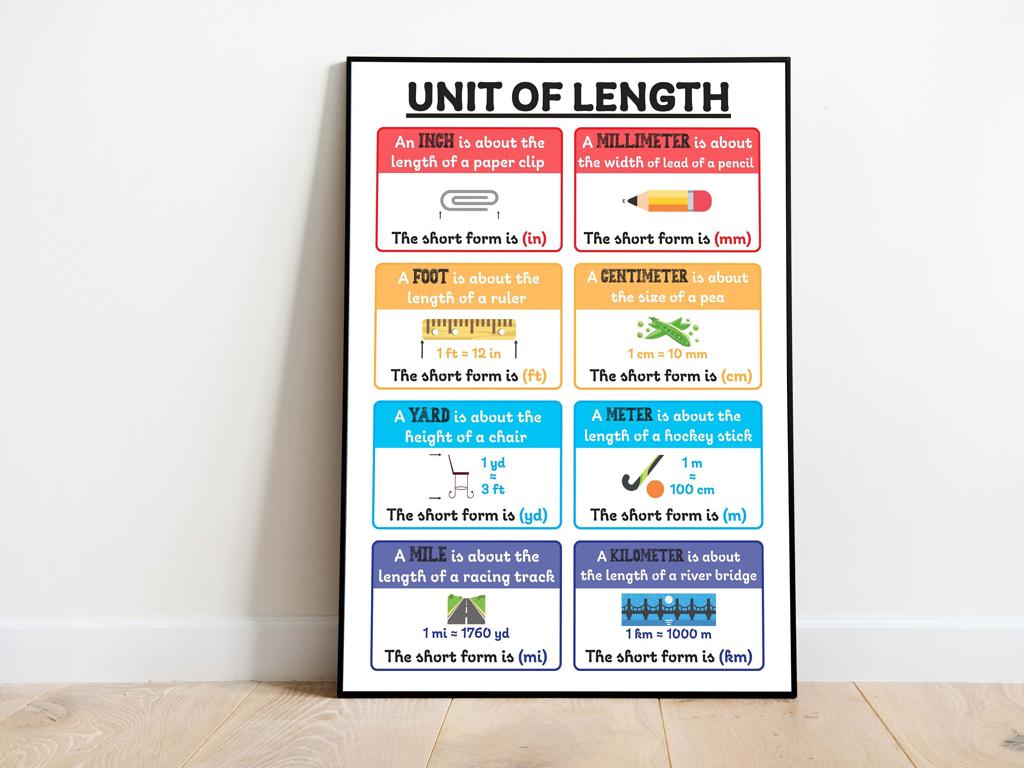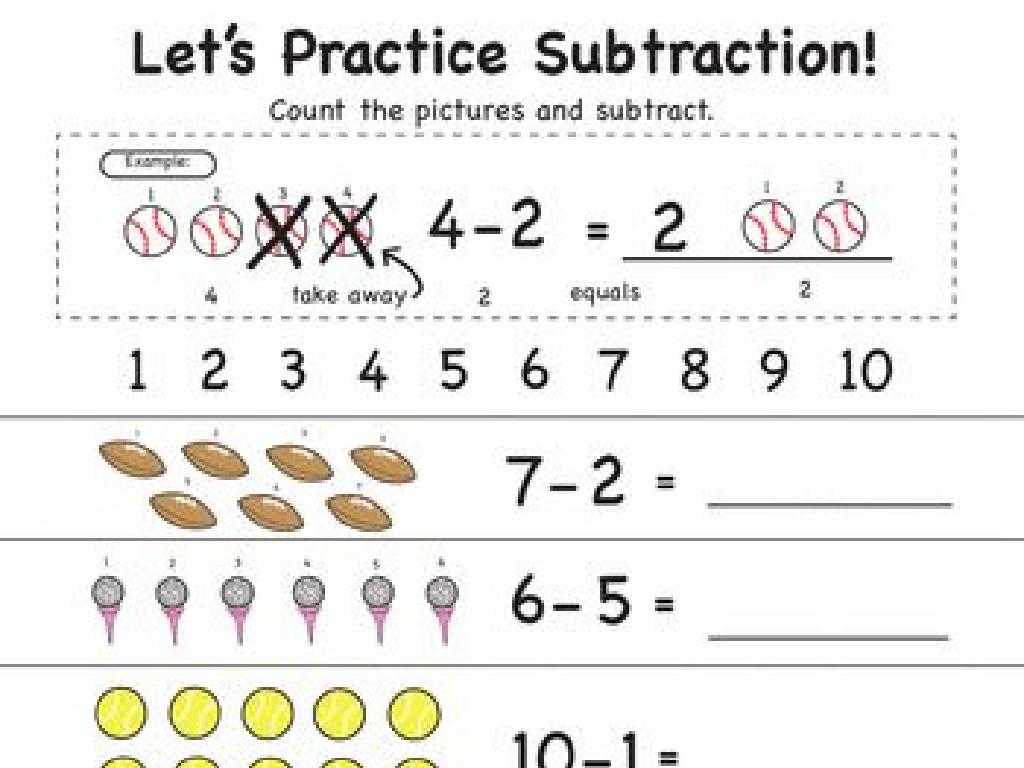Multiplication Facts For 2, 3, 4, 5, And 10
Subject: Math
Grade: Third grade
Topic: Multiplication Fluency Up To 10
Please LOG IN to download the presentation. Access is available to registered users only.
View More Content
Welcome to Multiplication!
– Today’s Adventure: Multiplication Facts!
– Multiplication as groups of numbers
– Think of multiplication as adding the same number over and over.
– Focus: Multiplying by 2, 3, 4, 5, and 10
– We’ll explore patterns when multiplying by these numbers.
– Practice makes perfect
– The more we practice, the quicker we’ll remember!
|
This slide introduces students to the concept of multiplication as a fun adventure, emphasizing the idea of multiplication as the addition of groups of numbers. Start by explaining that multiplication is a shortcut for adding the same number multiple times. Use visual aids like counters or drawings to show groups of 2, 3, 4, 5, and 10. Highlight the patterns that emerge when we multiply by these specific numbers, such as the last digit of multiples of 5 always being 0 or 5. Encourage students to practice regularly to build fluency. Plan to have interactive activities where students can practice with peers or through games to reinforce their learning.
Understanding Multiplication
– Multiplication as repeated addition
– If you have 2 apples and you need 2 sets, you have 2+2 apples.
– Example: 3 x 4 is 3 added 4 times
– 3+3+3+3 equals 12, so 3 x 4 equals 12.
– Visualize: 4 groups of 3 items
– Picture 4 baskets with 3 apples each, that’s 3 x 4.
– Multiplication builds on addition
|
This slide introduces the concept of multiplication as a form of repeated addition, which is a foundational skill for third graders. Start by explaining that multiplication is a shortcut for adding the same number multiple times. Use concrete examples, such as combining groups of objects, to help students visualize the concept. Emphasize that understanding multiplication in this way will make learning their multiplication facts for 2, 3, 4, 5, and 10 much easier. Encourage students to think of their own examples of repeated addition to share with the class.
Multiplying by 2: Doubling Numbers
– Multiplying by 2 means doubling
– Doubling is just adding the number to itself!
– Example: 2 x 3 equals 6
– Think of having two of the same thing
– Visualize 2 groups of 3
– Picture two baskets with 3 apples each
– Let’s practice doubling together
|
When we multiply a number by 2, we are essentially doubling the number or adding the number to itself. For example, 2 x 3 can be visualized as having two groups of three items, such as apples. This visualization helps students understand the concept of multiplication as repeated addition. During the practice session, provide various examples and use visual aids like counters or drawings to help students grasp the concept. Encourage them to come up with their own examples and share with the class to reinforce their understanding.
Multiplying by 3: Triple the Fun!
– Understanding multiplication by 3
– Visualizing 3 groups of a number
– Imagine having 3 baskets with 4 apples each
– Example: 3 x 4 equals 12
– Like adding 4 apples 3 times: 4 + 4 + 4
– Practice time: Solve problems
– Try multiplying 3 with different numbers
|
This slide introduces the concept of multiplying by 3, emphasizing that it’s like having three times the amount of an item. Start by explaining that multiplication is a faster way of adding the same number several times. Use visual aids, like pictures of groups of items, to help students understand the concept of ‘3 groups of a number’. For example, show them 3 groups of 4 items and count together to reach 12. After the example, encourage students to try multiplying by 3 with different numbers on their own, providing guidance and support as needed. This activity will help solidify their understanding of multiplication by 3 and prepare them for more complex multiplication facts.
Multiplying by 4
– Understanding multiplication by 4
– Multiplying by 4 is like adding a number 4 times
– Example: 4 groups of 2 equals 8
– Visualize 4 baskets with 2 apples each to get 8 apples
– Practice multiplying various numbers by 4
– Try 4 x 3, 4 x 5, and 4 x 6 to see patterns
– Multiplication by 4 is quick addition
– Instead of 4 + 4 + 4, we use 4 x 3 to get 12 quickly
|
This slide introduces students to the concept of multiplication by 4. Start by explaining that multiplying by 4 is the same as adding a number four times. Use visual aids like groups of objects to help students understand the concept. For example, show them 4 groups of 2 items to illustrate 4 x 2 = 8. Encourage the students to practice with different numbers, reinforcing the idea that multiplication is a faster way to add repeatedly. Provide several examples and ask students to work them out with you. This will help them become more fluent in their multiplication facts for the number 4.
Multiplying by 5: High-Five to Math!
– Understanding multiplication by 5
– Think of it as giving high-fives to 5 friends!
– Example: 5 groups of 3 equals 15
– Like high-fiving 3 friends, 5 times!
– Practice multiplying various numbers by 5
– Try 5 x 4 or 5 x 6 and see what you get!
– Discover patterns when multiplying by 5
– Notice how the answers end in 0 or 5?
|
This slide introduces students to the concept of multiplying by 5, making it fun by comparing it to giving high-fives. Start by explaining that multiplying by 5 is like adding a number to itself five times. Use the example provided to show how 5 groups of 3 make 15. During practice time, encourage students to multiply different numbers by 5 and observe the patterns that emerge, such as all products ending in 0 or 5. This will help them recognize the consistency in multiplication by 5, making it easier to remember. Have them share their findings to reinforce the concept.
Multiplying by 10: Easy Peasy!
– Understanding multiplication by 10
– Think of multiplication as adding groups of the same number.
– 10 x 2 is like 10 groups of 2
– Visualize 10 groups of 2 items to understand 10 x 2 = 20.
– Multiplying by 10 equals adding a zero
– When we multiply any number by 10, it’s like adding a zero to that number.
– Let’s practice with examples
– We’ll solve problems together to make it fun and easy.
|
This slide introduces students to the concept of multiplying by 10, emphasizing that it’s a simple process. Start by explaining that multiplication is like adding groups of the same number. Use visual aids to help students picture 10 groups of an item to understand how 10 x 2 becomes 20. Highlight the pattern that multiplying by 10 simply adds a zero to the number being multiplied, which is a handy trick for quick calculations. Engage the class with interactive examples, encouraging them to participate and solve multiplication problems involving 10. This will help solidify their understanding and build confidence in their multiplication skills.
Exploring Multiplication Patterns
– Patterns multiplying by 2
– Each result is double the previous number.
– Spotting patterns with 5 and 10
– Numbers end in 0 or 5 when multiplied by 10 or 5.
– Exploring patterns together
– Patterns aid memory
– Recognizing patterns makes it easier to recall facts.
|
This slide is aimed at helping students recognize and use patterns to improve their multiplication fluency. When multiplying by 2, the pattern is that each result is simply double the previous number. For example, 2×3 is 6, and 2×4 is 8, which is just 6 plus 2. Multiplying by 5 and 10 also has a visible pattern; the results always end in 0 or 5. It’s important to engage students in finding these patterns themselves as it reinforces their understanding and helps them remember multiplication facts more easily. Encourage students to work in pairs or groups to find more patterns and share with the class. This interactive approach not only makes learning fun but also promotes collaborative learning.
Multiplication Games: Fun with Facts!
– Engage in multiplication games
– Use dice, cards, and spinners
– Roll dice, draw cards, or spin to get numbers for multiplying
– Practice multiplying with tools
– Apply your knowledge of multiplication facts for 2, 3, 4, 5, and 10
– Games enhance learning excitement
|
This slide introduces a fun and interactive way to practice multiplication facts through games. Using dice, cards, and spinners, students will have the opportunity to multiply numbers in a playful setting, reinforcing their understanding of multiplication for 2, 3, 4, 5, and 10. The teacher should prepare different stations with these tools and possibly create small groups where students can rotate and try different games. Some game ideas include ‘Roll & Multiply’ with dice, ‘Card Product War’ where the highest product wins, and ‘Spin & Multiply’ challenges. These activities not only make learning multiplication facts enjoyable but also cater to different learning styles and encourage cooperative learning among students.
Class Activity: Multiplication Bingo
– Let’s play Multiplication Bingo!
– Solve multiplication facts for your card
– Use facts for 2, 3, 4, 5, and 10 times tables
– Cover the correct answers on your card
– Aim for five in a row to win!
|
This interactive class activity is designed to help students practice and reinforce their multiplication skills in a fun and engaging way. Provide each student with a bingo card that has a variety of products from the 2, 3, 4, 5, and 10 times tables. As you call out multiplication facts, students will solve them and cover the corresponding answer on their cards. The first student to cover five products in a row horizontally, vertically, or diagonally wins the game. Prepare multiple rounds to give everyone a chance to win, and consider small prizes for winners to motivate participation. This game also encourages mental math skills and helps students recognize patterns in multiplication.
Multiplication Review and Homework
– Review learned multiplication facts
– Complete the worksheet for homework
– Worksheet includes problems for 2, 3, 4, 5, and 10 times tables
– Practice multiplication regularly
– Daily practice helps improve speed and accuracy
– Aim for multiplication mastery
|
This slide is meant to recap what the students have learned about multiplication facts for 2, 3, 4, 5, and 10. It also sets the expectation for homework, emphasizing the importance of practice in achieving fluency. The worksheet provided should cover a range of problems to reinforce the day’s lesson. Encourage students to practice their multiplication facts daily, as regular repetition will help them memorize these foundational math skills. For the next class, plan a quick oral quiz or a game to make the review session interactive and fun, ensuring that students are engaged and motivated to achieve mastery in multiplication.






